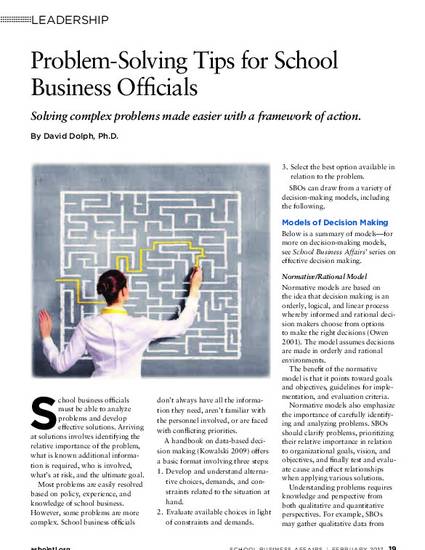
School business officials must be able to analyze problems and develop effective solutions. Arriving at solutions involves identifying the relative importance of the problem, what is known additional information is required, who is involved, what’s at risk, and the ultimate goal.
Most problems are easily resolved based on policy, experience, and knowledge of school business. However, some problems are more complex. School business officials don’t always have all the information they need, aren’t familiar with the personnel involved, or are faced with conflicting priorities.
A handbook on data-based decision making (Kowalski 2009) offers a basic format involving three steps:
1. Develop and understand alternative choices, demands, and constraints related to the situation at hand.
2. Evaluate available choices in light of constraints and demands.
3. Select the best option available in relation to the problem.
SBOs can draw from a variety of decision-making models, including the following.
- Educational Administration and Supervision,
- Educational Assessment, Evaluation, and Research,
- Educational Leadership,
- Education Economics,
- Elementary and Middle and Secondary Education Administration,
- Higher Education Administration,
- Other Educational Administration and Supervision,
- Special Education Administration and
- Urban Education
Available at: http://works.bepress.com/david_dolph/12/

This article originally appeared in the February 2017 School Business Affairs magazine and is reprinted with permission of the Association of School Business Officials International (ASBO). The text herein does not necessarily represent the views or policies of ASBO International, and use of this imprint does not imply any endorsement or recognition by ASBO International and its officers or affiliates.
Permission documentation on file.